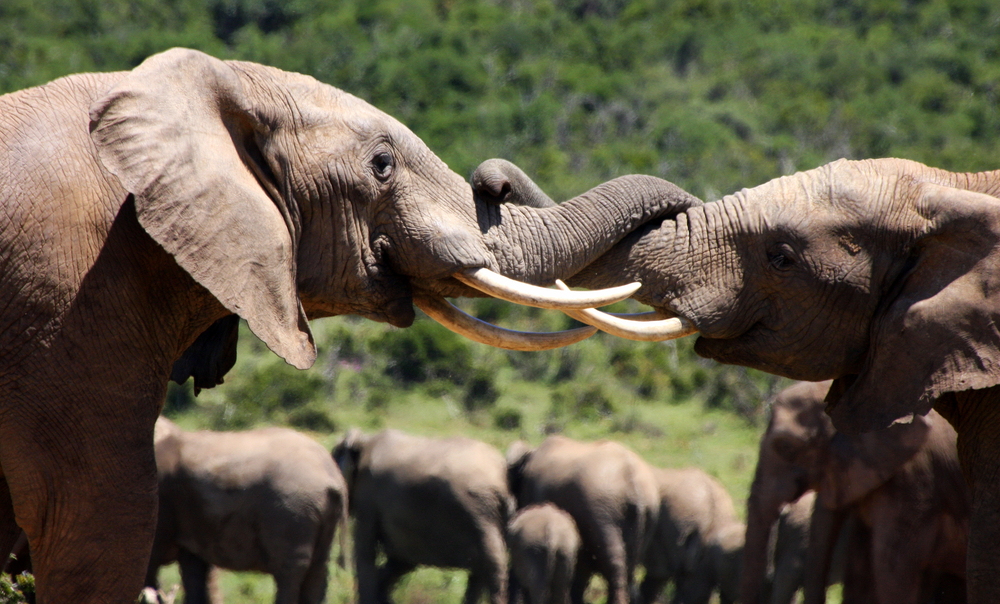Environment & Nature
Africa’s Ivory Poaching Crisis
Several of the last pristine wilderness landscapes in Sub-Saharan Africa are experiencing upsurges in thousands of elephants that are ruthlessly slaughtered by poachers who hack off the mammals’ ivory tusks and sell them in the seemingly lucrative illegal market of ivories in far off countries.
Tanzania, Kenya and Zimbabwe comprise some of the continent’s most impressive national parks. The endless valleys in these countries are habitat to a large number of wild animals including herds of elephants. Their parks offer people visceral experiences of wildlife safaris. At present, however, people themselves are threats to the vast plains and animals because of the rise of elephant poachers resulting to problematic byproducts like the endangerment of the specie and the decline of tourism.
Every year, about 25,000 elephants are being killed across Africa. Ivory poachers have eradicated 60% of the continent’s elephant population during the last ten years. Some authorities believe that at least 25 elephants are killed every day by these poachers. This year, 97 elephants have been killed so far, according to a document of the Kenya Wildlife Services (KWS). Satao, one of the biggest and oldest elephant with ivory tusk weighing more than 45 kilograms, has recently been killed. Satao’s killing is the latest in a course of elephant poaching.
Various distressing techniques are practiced in elephant poaching. Last year, poachers used cyanide toxin, which is generally used in informal local gold mining, to poison more than 300 elephants and numerous other safari animals in Hwange National Park, Zimbabwe in pursuit of ivory. This slaughter is regarded as the ‘worst and largest single massacre of elephant poaching in Africa for the last 25 years.’ This killing was supposedly intended for elephants but other animals such as kudus, buffalos and cows, which drank in the same water contaminated with cyanide, also died. Prior to this new technique, poachers used poison darts, armed rifles and machetes as efficient tools to slay the elephants. Well-known wildlife conservationist Richard Leaker described poaching in Africa as a ‘national disaster’ as poachers operated with ‘outrageous’ impunity.
Poachers kill elephants for their tusks that are sold predominantly in Asia. In here, ivory is greatly priced and is considered as ‘white gold.’ Ivory is typically turned into religious sculptures and trinkets. Wildlife conservationists warn that if ivory demand is not reduced, a time will come when all of Africa’s elephants are already wiped out.
Last June, police force searched a warehouse in the port city of Mombasa, Kenya and seized more than 200 elephant tusks weighing more than 2,000 kilograms. Tusks are sold for about $500 each to cross-border buyers.
According to the United Nations (UN), the unlawful ivory trade has more than doubled.
They also said that the business brings in approximately $100-million profits a year. Many poachers are enlisted from local African villages and are often linked to larger, more sophisticated organized crime groups and trans-national ivory retailers. Many game ranchers, hunters, and even so-called wildlife workers are believed to be assisting in the poaching.
In the most current wave of elephant poaching in Africa, the seemingly insatiable demand for ivory in a number of Asian countries serves as a trigger in the underground multi-million dollar business. Buddhist Chinese and Catholic Filipinos sustain the latest trade. Most smuggled ivory ends up as great and exquisite sacred carvings of religious items, statues and saints which are blessed by monks and priests. The profane ivory is then made sanctified and is considered to have miraculous power that brings good fate to the owner.
Many Buddhist monks and Catholic priests are said to be completey aware that the ivory is smuggled.
“If someone in the Philippines wants to smuggle an ivory statue of the baby Jesus to the U.S., Msgr. Cristobal Garcia is happy to advise, ‘Wrap it in old, stinky underwear and pour ketchup on it so it looks (crappy) with blood… This is how it is done,” researcher Bryan Christy wrote after going undercover for National Geographic.
Monsignor Garcia is head of protocol for the local Archdiocese of Cebu, Philippines, the world’s third largest Catholic populated country with 75 million devout Roman Catholics. Carving ivory into religious pieces in the Philippines is profoundly rooted in tradition that the Cebuano word for ivory, garing, also means ‘religious statue.’
In China, corrupt Buddhist monks also transact with smuggled ivory used to create large Buddha sculptures where each roughly costs $215,000. Even more saddening, Chinese also exploit ivory to make trinkets and chopsticks. At present, ivory to them is a sign of prestige thus a lot of Chinese are even more inclined to buy products made from the precious material.
The other major destinations of smuggled ivory are in Thailand and Vietnam.
“Unfortunately the demand for ivory in the Far East, particularly in China, has pushed the price of ivory up too far,” Daphne Sheldrick, who heads the David Sheldrick Wildlife Trust in Africa, said. “For village residents who have little earning potential, the lure of a poaching payday can be tough to resist.”
Over the past decade, ivory poaching has dramatically increased across Africa. Conservationists and police authorities are in a chase to clear out the poachers who have wiped out thousands of elephants in a staggeringly short period of time. According to wildlife associations, elephant poaching rates now are the worst they have been in a decade and recorded ivory seizures are at their highest levels. Based on a report published by Convention on International Trade in Endangered Species (CITES), there have been more extensive ivory seizures in the last three years than in any other time on record. In 2011 alone, the police force tracked 14 cargos of illegal ivory weighing over 24,000 kilograms.
Just recently, courts ruled light sentences on Africa elephant poachers where only a few among them were prosecuted. Tough new legislations that will lead to stronger verdicts and higher conviction rates are hoped to be passed this year. This is done in the hope of discouraging poachers to continue their heinous crimes. More importantly, lessening demand for ivory must take place if the people want to save the elephants.
With reports from Cyra Moraleda and The National Post






















